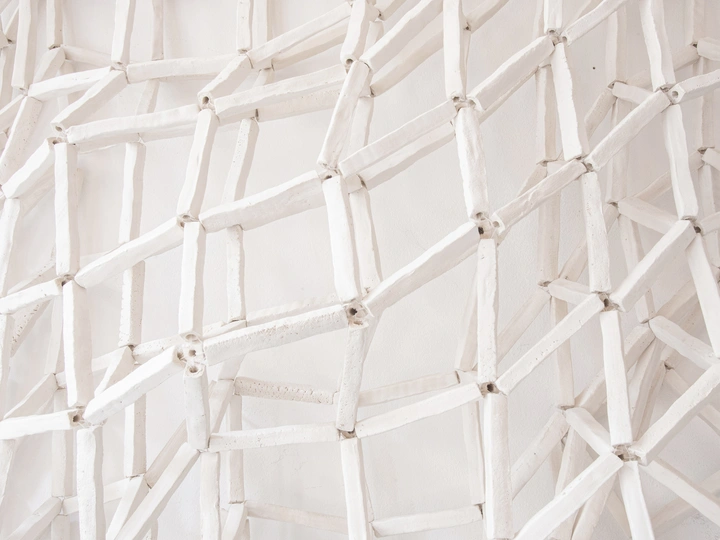Sculptural matter of textility

I am a Lithuanian-born visual artist and designer based in Berlin. My academic background is in art and textiles. I have BA and MA degrees in Textile and Surface Design (KHB Berlin). Alongside my art practice, I am a lecturer for textile technologies at multiple institutions in Berlin and facilitate workshops applying craft methods to approach textiles as a spatial matter.
In my art practice, I focus on a practical and theoretical investigation of material identities, their transformation, and their fluidity. I create sculptural works in which I deliberately contrast rigid ceramic materials with kinetic textile properties. With my objects, I challenge hierarchies and the coexistence of binaries: pattern and structure, artisanal and industrial, textile and architectural, feminine and masculine. At the same time, my sculptures encourage speculative scenarios on textile architecture.
My work has been exhibited in galleries and museums, as well as design festivals internationally, including COLLECT in London, Dutch Design Week in the Netherlands, and Berlinische Galerie in Berlin, among others.
In my art practice I challenge the conventional boundaries between textiles and spatial art. My sculptures resemble abstract models of buildings, evoking remnants or skeletons of modern architecture. Through the adept use of weaving techniques, objects acquire the distinct kinetics of fabrics. The combination of rigid ceramic materials with systematic weaving methods results in a hybridity in my works - they resemble man-made creatures with an organic structure echoing the movements of living organisms. This 'otherness' places them within a distinct speculative category, where sculptures exist as a blend of nature and architecture, a fusion often perceived as contradictory.
My artworks encourage reflection on the potential of interdisciplinary approaches in spatial practices and stimulate new perspectives on multifunctional architecture for both humans and non-humans.